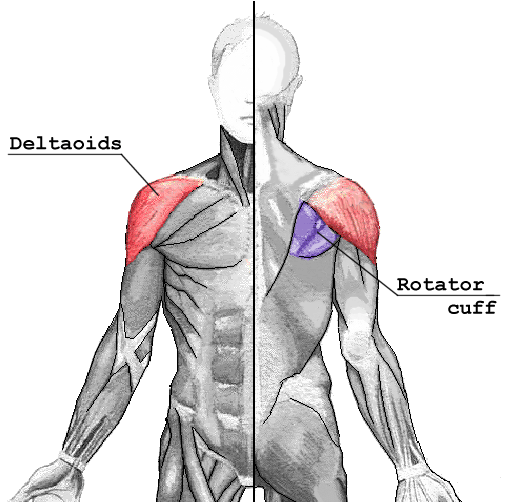When Stretches and Massage Don’t Cut It

People come into clinic all the time with muscles that they’ve been massaging, stretching, foam rolling, etc for months or even years, but the issue just keeping coming back (sometimes within hours). This is because muscles are never tight and sore for no reason – you just haven’t found the reason yet.
Then WHY are they tight and sore?
When you have an injury, changes occur in the way your brain uses certain muscles to move certain ways. These might change due to the damaged muscle weakening, changes to the positions of the bones they’re attached to, or just due to your brain trying to avoid pain by preferencing some muscles and avoiding others. Joint irritation and malalignment will almost always create negative muscle responses around them too.
This can result in cases where certain muscles will become weak and neurologically switched off, and as a result other related muscles can become overactive and tight. The relationships are typically between muscles that work together (synergists) or against each other (antagonists). Weak muscles can force their synergists to tighten and work harder to cover their slack, and can cause their antagonists to become tight and overactive from being unopposed all the time. Contrary to what many people think, weak muscles are often tight themselves, as they are having to remain constantly contracted to try and maintain some kind of helpful function.

Any tight muscles can be either strong or weak. Managing that tightness requires treatment that will decrease the neurological activity in a strong muscle (e.g. massage and stretching), or treatment that will increase the neurological activity in a weak muscle (e.g. targeted activation exercises). This means that stretching a tight muscle that is actually weak can make it tighten up even more! This is after we’ve made sure the joints and skeletal framework for the muscles are all moving and functional first.
SMALL MUSCLES ARE NOT BIG MUSCLES
These muscular relationships of tightness and weakness can often occur between small, local muscles, and large, global muscles. In these scenarios, larger global muscles become weak and neurologically under active. As a result, the smaller local muscles that are primarily supposed to be doing more fine control and stabilising movements, are forced to pick up the slack.
This is never a fair trade, as a small muscle with a different primary role is clearly not equipped to perform the role of a much bigger muscle. The smaller muscles very quickly become overloaded, and chronic tightness, pain, tendon damage, and tearing can start to occur. Some common examples of this are with the smaller piriformis in your hip overworking to cover a weak gluteus maximus, or a supraspinatus rotator cuff muscle in the shoulder overworking for a weak deltoid.


So how do you know whether you should be stretching, massaging, or strengthening a muscle that’s giving you issues?
While there are some more common patterns when it comes to muscles that are typically problem areas for people, you really can’t know until you’ve had them tested. At bare minimum, you want to be paying attention to whether you’re feeling any significant improvement after a stretch or exercise, and if not, maybe try the opposite one next time to see if it works better. The best way is have a knowledgable practitioner who can perform specific muscle tests identify the issue for you, so that your time spent taking care of your body is time well spent!

